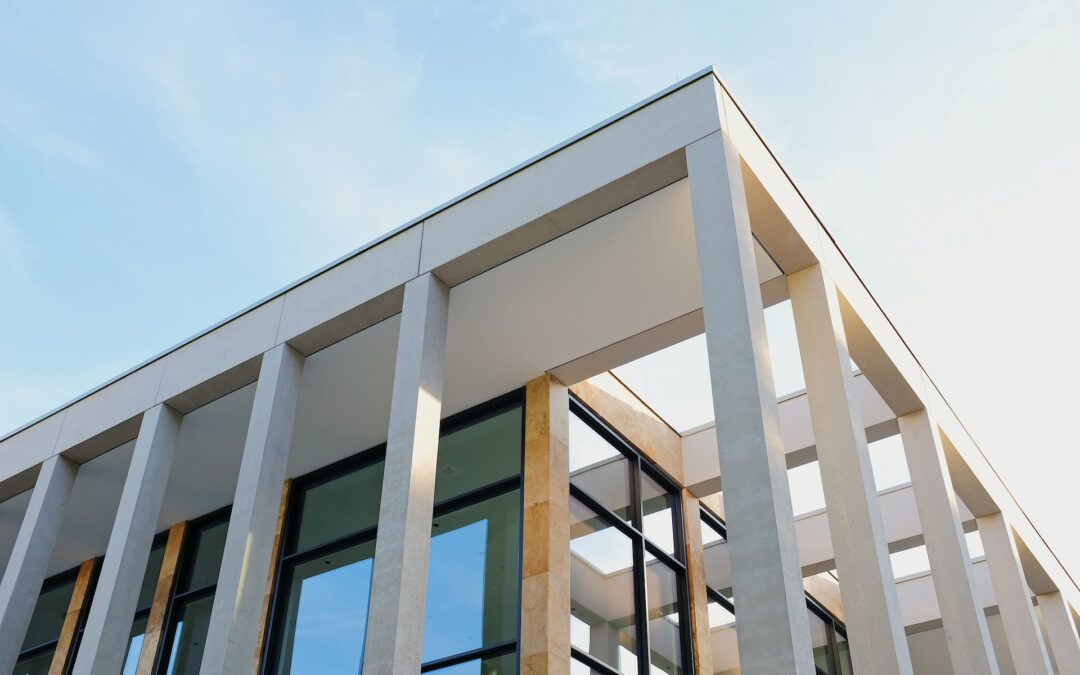As climate change continues to intensify, with increasing occurrences of natural disasters like storms, floods, and wildfires, a growing need for resilient and climate-adaptive architecture is needed to ensure the built environment can withstand and adapt to these challenging conditions. Climate-adaptive architecture refers to the design of buildings and spaces that can not only survive extreme climate events but also minimize their impact on the environment and enhance the post-disaster recovery process.
In this article, we will examine the principles and strategies of climate-adaptive architecture, discussing its multifaceted benefits, including environmental sustainability, social resilience, and long-term cost savings. We will also delve into Archiplex Group’s approach to climate-adaptive design and explore some of their most successful projects in building resilience against the impacts of climate change. Join us in discovering the pivotal role climate-adaptive architecture plays in shaping a sustainable and resilient future, and learn how Archiplex Group’s forward-thinking designs can help our built environment stand strong in the face of adversity.
Key Strategies for Climate-Adaptive Architecture
Climate-adaptive architecture encompasses a range of strategies and approaches aimed at creating buildings and environments that are resilient to the various impacts of climate change. Some of these key strategies include:
- Site Selection and Analysis: Architects must carefully consider a project’s location and analyze potential climate risks to make informed decisions about building placement, elevation, and orientation in order to minimize exposure to climate hazards.
- Stormwater Management: Designing landscapes that capture and manage stormwater runoff helps reduce flooding and encourages water infiltration, creating a more resilient building environment during extreme weather events.
- Energy Efficiency and Renewable Energy: Incorporating energy-efficient technologies and renewable energy sources, such as solar panels and wind turbines, bolsters a building’s ability to remain functional during power outages and mitigates the environmental impacts of energy consumption.
- Resilient Building Materials and Methods: Architects must prioritize the use of durable, long-lasting, and climate-resistant materials that can withstand extreme temperatures, storms, and other weather-related hazards.
Archiplex Group’s Approach to Climate-Adaptive Design
Archiplex Group’s commitment to sustainable design encompasses a focus on climate-adaptive architectural solutions that enhance resilience and address the demands of a changing environment. Their approach includes:
- Collaborative Design Process: Archiplex Group engages with clients, stakeholders, and local communities to create a shared vision for a climate-adaptive project that meets unique needs and addresses site-specific climate challenges.
- Holistic Sustainability: Archiplex Group views climate-adaptive design as a key component of a broader sustainable design strategy, emphasizing energy efficiency, resource conservation, and social responsibility in all aspects of the design process.
- Integrated Post-Disaster Recovery Plans: In line with their dedication to resilience, Archiplex Group incorporates post-disaster recovery planning into their climate-adaptive design approach, ensuring buildings and communities are prepared to bounce back more efficiently after climate-related hazards.
- Continuous Learning and Innovation: Leveraging the latest research, technologies, and best practices, Archiplex Group remains vigilant in seeking new and innovative climate-adaptive design strategies to create the most resilient and sustainable spaces possible.
Benefits of Climate-Adaptive Architecture
Incorporating climate-adaptive design strategies into architecture offers numerous benefits, including:
- Enhanced Environmental Sustainability: Climate-adaptive buildings are designed with sustainability in mind, reducing energy consumption, resource use, and environmental impacts.
- Improved Public Health and Safety: By creating structures and spaces that can withstand and respond effectively to climate hazards, architects contribute to safer and healthier environments for inhabitants and surrounding communities.
- Cost Savings: Investing in climate-adaptive design measures can save building owners money over time by reducing repair and recovery costs associated with climate-related damages and disturbances, as well as increasing energy efficiency and reducing operating expenses.
- Social Resilience: Climate-adaptive design contributes to community resilience by fostering stronger, more adaptive societies that can recover and thrive after climate-related disruptions.
Archiplex Group’s Climate-Adaptive Design Success Stories
Archiplex Group’s commitment to climate-adaptive architecture has resulted in successful projects that exemplify resilience in the face of climate challenges:
- Storm-Resistant Coastal Residence: Archiplex Group designed a contemporary, storm-resistant coastal home with elevated foundations, enhanced stormwater management systems, and durable, climate-resistant materials, ensuring its ability to withstand severe weather events and the effects of climate change.
- Green-Roofed Commercial Building: This innovative project features a green roof and state-of-the-art rainwater management systems, helping to reduce stormwater runoff, promote biodiversity, and enhance the building’s thermal performance, making it more energy-efficient and climate-adaptive.
- Resilient Urban Mixed-Use Development: Archiplex Group’s urban mixed-use development incorporates climate-adaptive design strategies such as flood-resistant ground floor design, energy-efficient envelope design, and access to public transportation, strengthening the project’s overall resilience and sustainability.
Building a Resilient Future with Archiplex Group
In the face of the mounting impacts of climate change, the need for climate-adaptive architecture is becoming a non-negotiable aspect of responsible, sustainable design. Archiplex Group’s dedication to creating resilient, sustainable spaces showcases our commitment to the profound potential of climate-adaptive design, offering buildings and environments that can withstand the test of time and the challenges of a changing climate.
If you’re passionate about creating a climate-resilient and environmentally sustainable future, consider partnering with Archiplex Group for your next architectural project. Together, we can build a more resilient world for generations to come, prioritizing innovation and adaptability while cultivating spaces that not only endure but thrive under the demands of climate change. Contact us today to learn more about our architectural services in Utah.

